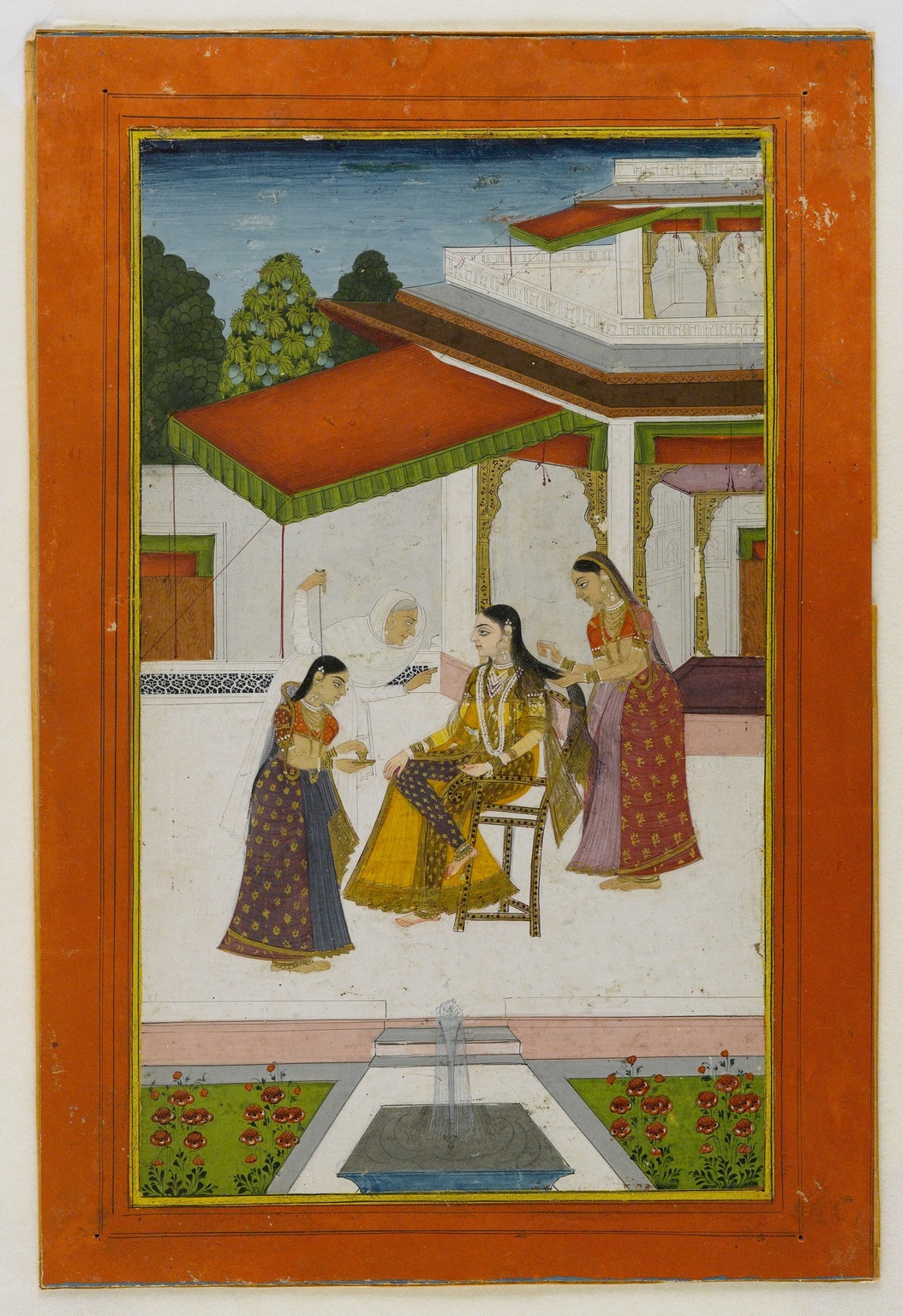
Mandalika Ragini, Page from a Dispersed Ragamala Series
mid 18th century
Indian
- Maker/Artist
- Indian
- Classification
- Painting
- Medium
- Opaque watercolors on paper
- Locations
- Place made: Wanparthy, Southern Deccan, India
- Dimensions
- sheet: 12 1/4 x 7 in. (31.1 x 17.8 cm) image: 10 1/2 x 5 3/8 in. (26.7 x 13.7 cm)
- Accession Number
- 79.266
- Credit Line
- Gift of Dr. Farooq Jaffer
- Rights Statement
- nkcr
Have a concern, a correction, or something to add?











